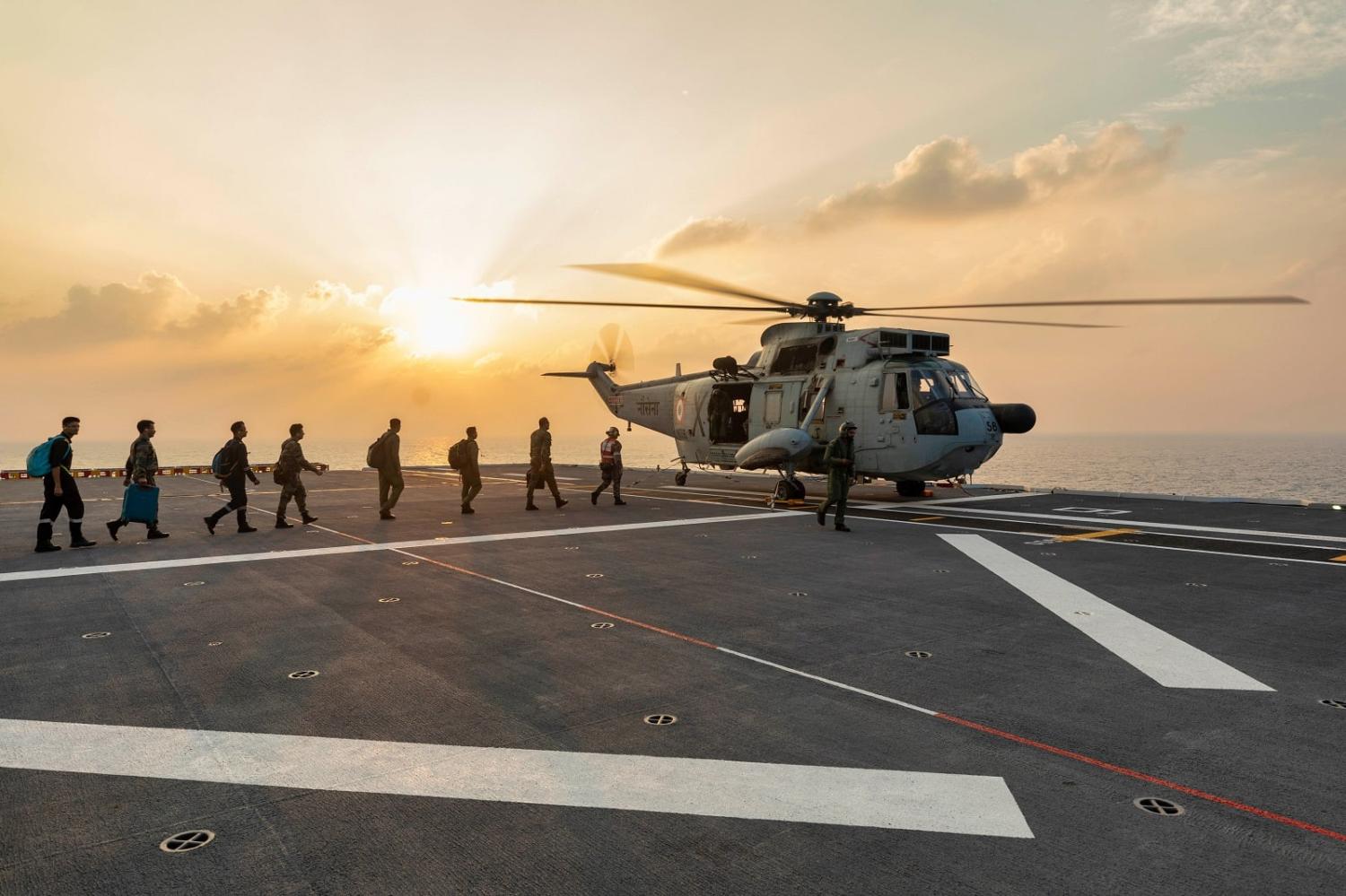When India’s External Affairs Minister Dr Jaishankar addressed the Lowy Institute in Sydney last month, it was significant for two reasons. It was his second trip to Australia this year – he described his personal pride in the bilateral relationship “picking up steam very, very rapidly”. And his visit, coincidently, came on the eve of Australia’s Indo-Pacific Endeavour defence task group – the largest yet – departing for the Indian east coast city of Visakhapatnam.
One might reasonably ask: if Australia wanted to send a reciprocal diplomatic message of friendship to India, would it not be logical to send Foreign Minister Penny Wong? To wit: by plane? Why send HMAS Adelaide and ANZAC on the two-and-a-half-week journey via Sri Lanka, with an impressive embarked amphibious force of Australian Army, helicopters and vehicles, plus defence civilians, Border Force representatives and academic guests? (As one of the latter, it was a question this writer had ample time to ponder.)
While a port visit from a friendly nation is a practice of “naval diplomacy” as old as time, it may also simultaneously be the least well understood. The academic literature has clearly favoured the kinetic end of the spectrum, with tactics such as shouldering or “shots across the bow” yielding more transparent outcomes.
On the surface, a port visit conveys a message of amity and reassurance identical to that expressed by a visiting diplomat or minister. But on a deeper level, the message is altered by the vessel and its capabilities – “the medium is the message” as Marshall McLuhan put it. That is, a visit from HMAS Adelaide is not just explicitly about friendship, but implicitly about a strong friend demonstrating potent capabilities a long distance from home. The message naturally carries a second signal of deterrence to potential adversaries further afield.
Of course, any form of diplomatic communication is about dialogue, and a range of fascinating and sophisticated messages were conveyed in return across a series of think-tank roundtables and university engagements sponsored by Indo-Pacific Endeavour 2022 (IPE’22) and organised by Australia’s High Commission in Delhi and Consulate-General in Chennai.

Among the researcher and student communities, a granular appreciation of the bilateral relationship was evident, in particular the pride at India’s participation in recent defence exercises such as Pitch Black and Kakadu, the Indian Navy’s deployment of a P-8I maritime patrol aircraft to Darwin in April this year, and the significant Mutual Logistics Support Arrangement announced in 2020. Their questions conveyed a sense of optimism about how the relationship could continue to evolve, such as whether India join the advanced technology streams of AUKUS, excluding the nuclear-powered submarine aspect? Or join the Five Eyes intelligence partnership? Or could the Quad become a more formal defence alliance if the security situation deteriorated?
Some differences were also apparent. Australia’s literacy on India’s maritime diplomatic agenda – including the Indian Ocean Naval Symposium, the Colombo Security Conclave, and Prime Minister Narendra Modi’s SAGAR concept (Security and Growth for All in the Region) – is perhaps less widespread. India’s Indo-Pacific maritime gaze stretches to the shores of East Africa, whereas Australia’s typically does not. And while Australia has embraced the maritime mindset of the Indo-Pacific, India cannot turn its back on its terrestrial challenges with neighbours Pakistan and China.
Perhaps the most intriguing suggestion was that India and Australia could cooperate more deeply on energy security, particularly considering Australia’s near total reliance on seaborne refined petroleum imports. With India one of the world’s biggest oil refiners and exporters, and shipping routes between the two countries free of the maritime choke points that would bedevil supplies during conflict, and indeed at a much closer proximity than the United States’ Strategic Petroleum Reserve with whom Australia announced an agreement in 2020, it is an option that deserves further study.
As IPE’22 concludes its tour of South and Southeast Asia, it is natural to question whether defence engagement activities or naval diplomacy have an effect worth the considerable effort. Such things are hard to measure, of course – recall the quote from an American department store owner, who said: “I know half of my advertising budget is wasted … I just don’t know which half.” But with the bilateral relationship thriving, including most recently the announcement that Australia has ratified the free trade agreement with India, and reciprocal visits between the nations’ respective leaders are planned for 2023, comfort should be that IPE’s three visits in recent years have made an undeniable contribution.

